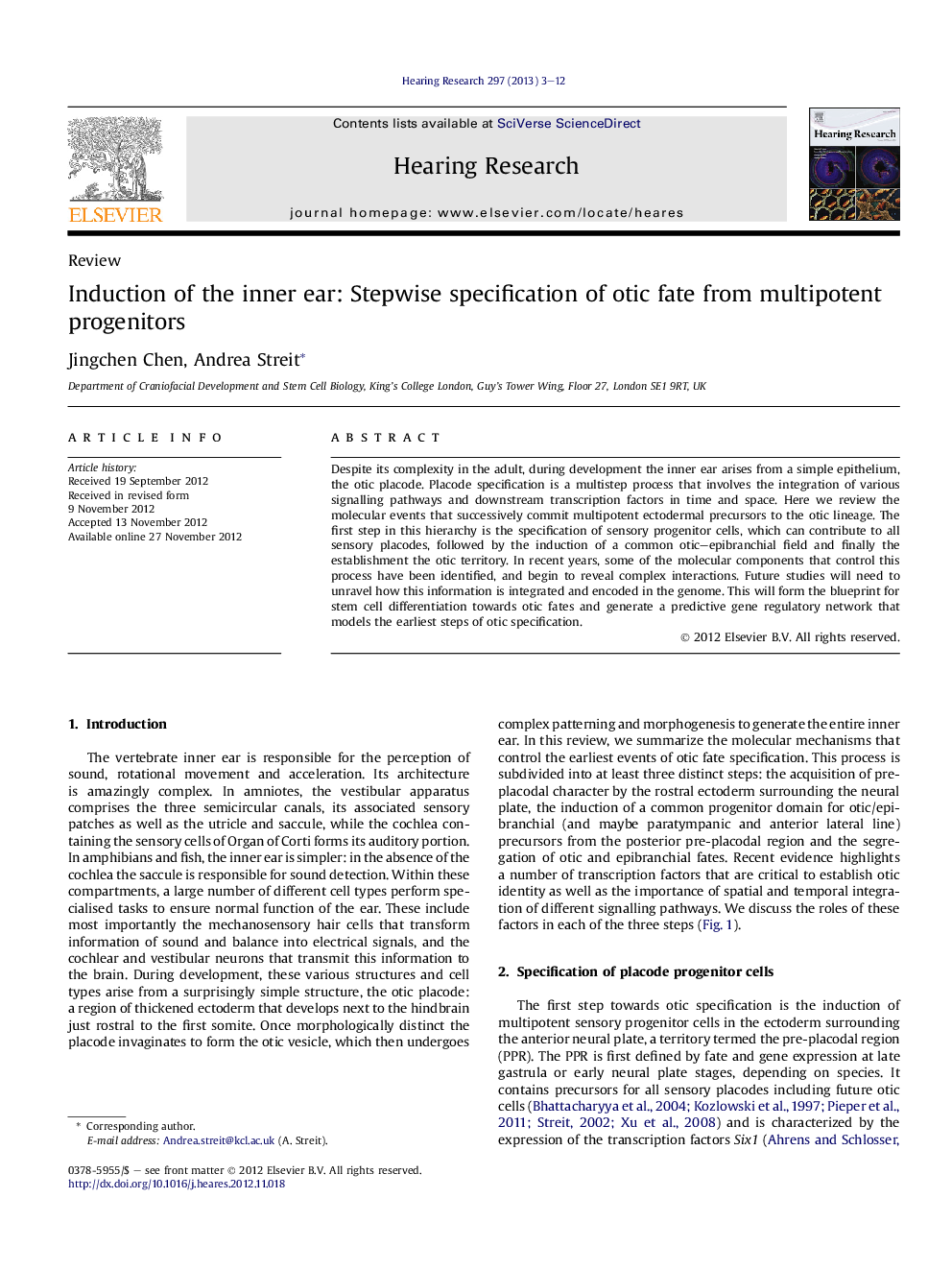| Article ID | Journal | Published Year | Pages | File Type |
|---|---|---|---|---|
| 4355235 | Hearing Research | 2013 | 10 Pages |
Despite its complexity in the adult, during development the inner ear arises from a simple epithelium, the otic placode. Placode specification is a multistep process that involves the integration of various signalling pathways and downstream transcription factors in time and space. Here we review the molecular events that successively commit multipotent ectodermal precursors to the otic lineage. The first step in this hierarchy is the specification of sensory progenitor cells, which can contribute to all sensory placodes, followed by the induction of a common otic–epibranchial field and finally the establishment the otic territory. In recent years, some of the molecular components that control this process have been identified, and begin to reveal complex interactions. Future studies will need to unravel how this information is integrated and encoded in the genome. This will form the blueprint for stem cell differentiation towards otic fates and generate a predictive gene regulatory network that models the earliest steps of otic specification.
► Otic induction as a multistep process. ► Repeated use of FGF signalling in sensory progenitor and OEPD induction. ► Cross repressive transcription factor interactions in cell fate separation. ► Integration of FGF, Wnt and Notch in otic versus epibranchial fates.
